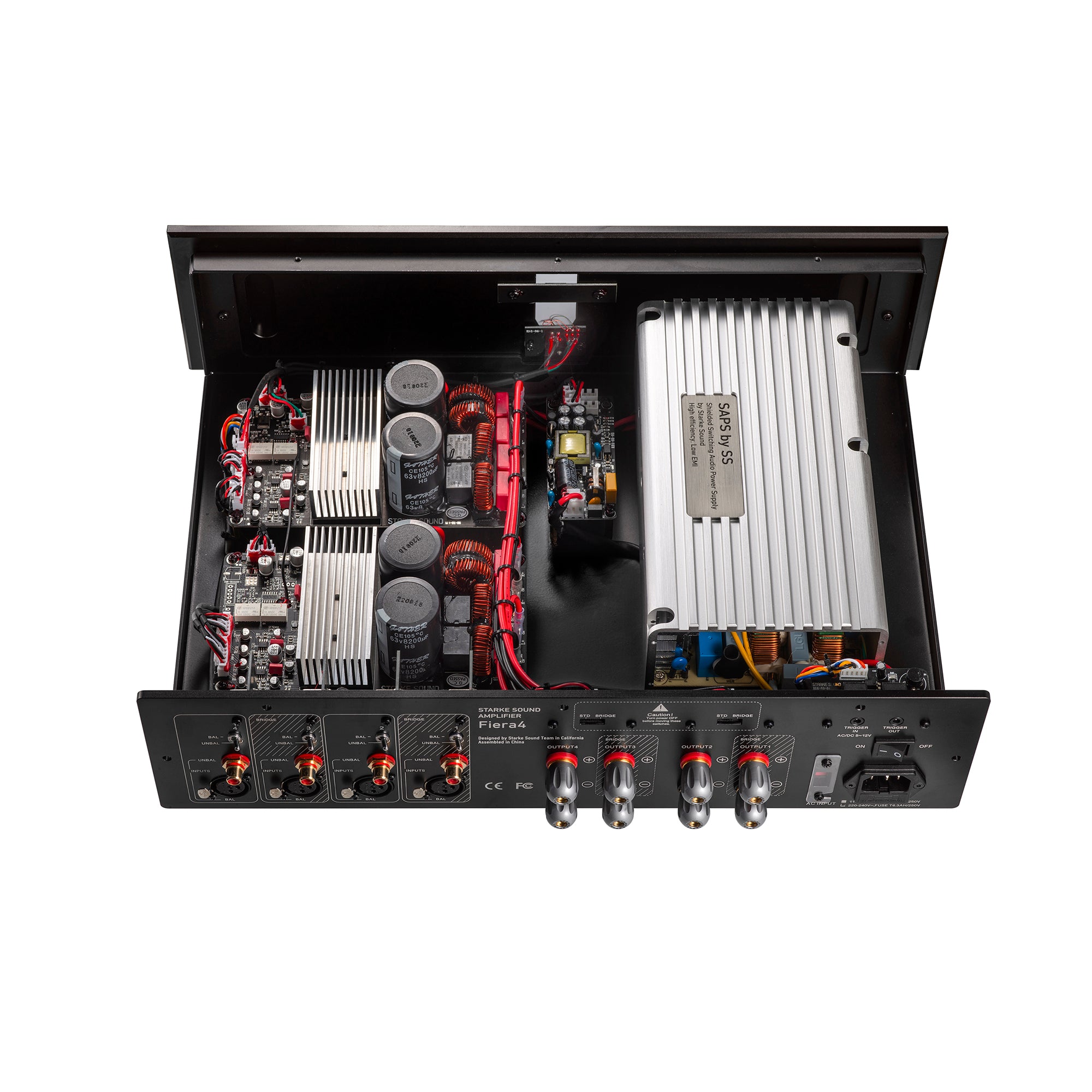Dan Wiggins comments on the deign philosophy of the Fiera4:
"IMHO, the gain is it simply sounds better. Pursuing that last 1/10,000th of a percent of THD often results in lots of negative feedback. Going for that last few nanovolts of noise can put even more capacitance on the power rails. And the result is an amp that measures better, but is more sterile sounding, it’s not as involving.
And we optimized performance in the first 10W of power output, at a slight expense of measured performance at levels above that.
Are these technical terms? Nope. But then much of what is in audio is about how the nonlinearities and ‘errors’ sound, rather than how we quash that all. We wanted a great sounding – and performing – amp at about 125-130W per channel. That’s gonna drive most of our speakers to the > 105 dB SPL range. We don’t need more than that.
And the audibility of an amp that’s 0.005% THD versus one that is 0.0005% is zero. Remember, the bulk of your listening is at 1-5W of power, and when you get your speakers up above 93-95 dB SPL (like with 5-10W of power), they’re typically generating 0.5% or more THD – literally 100 times more than our amp does. You’re not going to hear the amp.
So what we gained was an amp that measures and sounds better in the ranges you almost always listen to it. If you have HIGHLY COMPRESSED audio, with just a 10 dB crest factor, you’ll push clipping at 130-150W of power – but your average power output will be 13-15W. That’s for MASSIVELY compressed sources. So we focused on making the measurements flat and linear at the place you’re mainly listening to – and let the high power end up where it ended up.
In other words, it’s not just about that single benchmark max power point – it’s what it does for the 99% of the time you’re using it."

